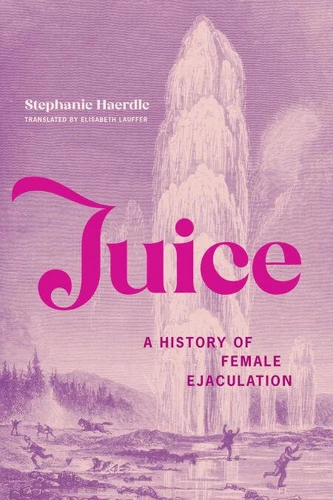Juice. A History of Female Ejaculation
Par : ,Formats :
Disponible dans votre compte client Decitre ou Furet du Nord dès validation de votre commande. Le format ePub protégé est :
- Compatible avec une lecture sur My Vivlio (smartphone, tablette, ordinateur)
- Compatible avec une lecture sur liseuses Vivlio
- Pour les liseuses autres que Vivlio, vous devez utiliser le logiciel Adobe Digital Edition. Non compatible avec la lecture sur les liseuses Kindle, Remarkable et Sony
- Non compatible avec un achat hors France métropolitaine
 , qui est-ce ?
, qui est-ce ?Notre partenaire de plateforme de lecture numérique où vous retrouverez l'ensemble de vos ebooks gratuitement
Pour en savoir plus sur nos ebooks, consultez notre aide en ligne ici
- Nombre de pages244
- FormatePub
- ISBN978-0-262-38169-7
- EAN9780262381697
- Date de parution23/04/2024
- Protection num.Adobe DRM
- Taille1 Mo
- Infos supplémentairesepub
- ÉditeurThe MIT Press
Résumé
The fascinating, little-known history of female sex fluids through the millennia. For over 2000 years, vulval sex fluids were understood to be a natural part of female pleasure, only to become disputed or categorically erased in the twentieth century. Today what do we really know about female ejaculation and squirting? What does the research show, and why are so many details unknown? In Juice, Stephanie Haerdle investigates the cultural history of female genital effluence across the globe and searches for answers as to why female ejaculation-which, according to some reports, is experienced by up to 69 percent of all women and those who have vulvas upon climaxing-has been banished to the margins as just another male sex fantasy.
Haerdle charts female juices from the earliest explanations in the erotic writings of China and India, to interpretations of the fluids by physicians, philosophers, and poets in the Middle Ages and early modern period, to their denial, contestation, and suppression in late nineteenth-century Europe. As she shows, the history of ejaculation and squirting is a history of women, their desires, and the worship and denigration of the female body, as well as the cultural concepts of pleasure, sexuality, procreation, the body, masculinity, and femininity.
By examining the fantasies and fears that have long accompanied them, Juice restores female gushes to their rightful place in our collective understanding so that they can once again be recognized, named, and experienced.
Haerdle charts female juices from the earliest explanations in the erotic writings of China and India, to interpretations of the fluids by physicians, philosophers, and poets in the Middle Ages and early modern period, to their denial, contestation, and suppression in late nineteenth-century Europe. As she shows, the history of ejaculation and squirting is a history of women, their desires, and the worship and denigration of the female body, as well as the cultural concepts of pleasure, sexuality, procreation, the body, masculinity, and femininity.
By examining the fantasies and fears that have long accompanied them, Juice restores female gushes to their rightful place in our collective understanding so that they can once again be recognized, named, and experienced.
The fascinating, little-known history of female sex fluids through the millennia. For over 2000 years, vulval sex fluids were understood to be a natural part of female pleasure, only to become disputed or categorically erased in the twentieth century. Today what do we really know about female ejaculation and squirting? What does the research show, and why are so many details unknown? In Juice, Stephanie Haerdle investigates the cultural history of female genital effluence across the globe and searches for answers as to why female ejaculation-which, according to some reports, is experienced by up to 69 percent of all women and those who have vulvas upon climaxing-has been banished to the margins as just another male sex fantasy.
Haerdle charts female juices from the earliest explanations in the erotic writings of China and India, to interpretations of the fluids by physicians, philosophers, and poets in the Middle Ages and early modern period, to their denial, contestation, and suppression in late nineteenth-century Europe. As she shows, the history of ejaculation and squirting is a history of women, their desires, and the worship and denigration of the female body, as well as the cultural concepts of pleasure, sexuality, procreation, the body, masculinity, and femininity.
By examining the fantasies and fears that have long accompanied them, Juice restores female gushes to their rightful place in our collective understanding so that they can once again be recognized, named, and experienced.
Haerdle charts female juices from the earliest explanations in the erotic writings of China and India, to interpretations of the fluids by physicians, philosophers, and poets in the Middle Ages and early modern period, to their denial, contestation, and suppression in late nineteenth-century Europe. As she shows, the history of ejaculation and squirting is a history of women, their desires, and the worship and denigration of the female body, as well as the cultural concepts of pleasure, sexuality, procreation, the body, masculinity, and femininity.
By examining the fantasies and fears that have long accompanied them, Juice restores female gushes to their rightful place in our collective understanding so that they can once again be recognized, named, and experienced.






